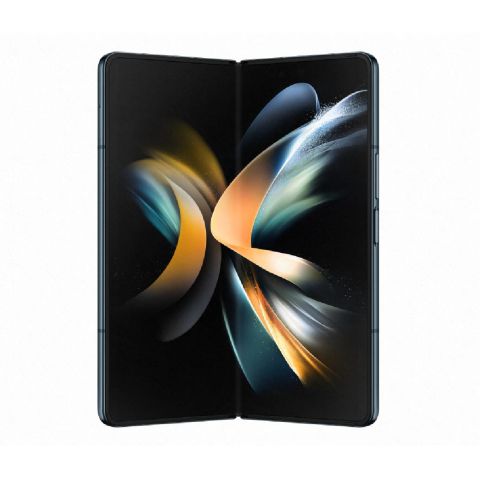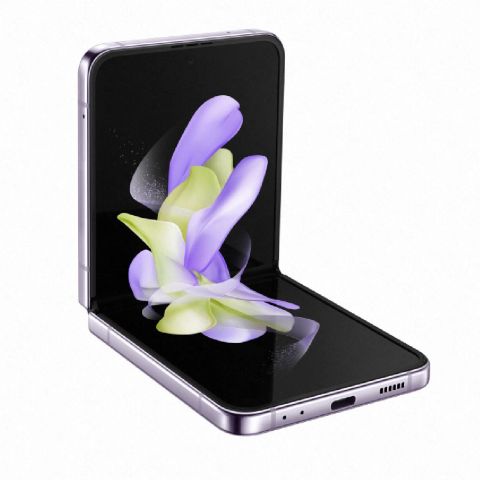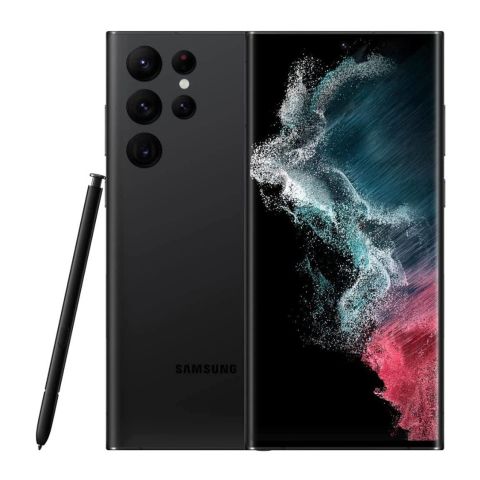
Call it the second coming of flip phones, but Samsung has brought back to life the appeal of a phone that folds in half, taking up less space in your pocket or bag than a traditional smartphone does. But instead of looking and working like Dad’s flip phone, the Galaxy Z Fold 4 is an all-out smartphone that moonlights as a tablet when you open it.
I’ve spent the last couple of weeks testing the $1,799 Z Fold 4 (along with the Z Flip 4), putting it through its paces during both work and play. It’s a nice upgrade, but I’m not sure it’s worth actually buying unless you’re coming from an older Z Fold, or are ready to finally dive into the foldable smartphone market. Let me explain why.
The do-it-all foldable phone
The Galaxy Z Fold 4 is a great buy for folks willing to invest in a device that can be your phone and tablet in one. However, folks who already own a Z Fold 3 can skip this one.

What makes the Z Fold 4 so unique is that it features two different displays. There’s the 6.7-inch cover screen on the front of the phone that looks and works like a more traditional smartphone. Then there’s the 7.6-inch main display that’s unveiled by opening the Z Fold 4 like a book. The middle of the display has a crease where the screen folds, but it’s less prominent than last year’s Galaxy Z Fold 3. When the Z Fold 4 is closed, it’s akin to stacking two smartphones on top of each other.
On the right edge of the phone is a fingerprint sensor that doubles as a power button and a volume rocker. There’s also a USB-C port on the bottom edge of the Z Fold 4 for charging and data transfers. There are three colors available this year; I received Graygreen, and there’s also Phantom Black and Beige.
There’s a definite learning curve to using any foldable phone, but especially with one that goes from smartphone to tablet and back so easily. That said, it’s a joy to use, especially when you need more screen real estate.
With the Z Fold 4, Samsung made some small design changes that actually have a big impact on the overall experience. Those changes? The cover screen and the inside screen are slightly — and I do mean slightly — larger than the displays on the Z Fold 3.

The cover display is 2.7 millimeters wider than the same display on the Z Fold 3. And the inner display is a full 3 millimeters wider. It’s a minor change — but it’s one that I’ve found to make a big difference in day-to-day use.
On the cover screen, for example, using the keyboard to type out a message or email no longer feels like you’re doing so on a display that’s far too small to type on.
The same goes for the main screen. The added width makes the Z Fold 4 a little easier to hold in both single and two-handed situations.
Of course, the benefit of having such a big main screen is that it allows you to see and do more at a single time. Be it using multiple apps at the same time in a split screen view, or looking at a document, there’s really no other smartphone that can offer a similar experience.
Both displays on the Z Fold 4 offer a 120Hz refresh rate, an important feature for those who do a lot of gaming or are frequently scrolling through long emails or social media apps. I can’t say the picture quality is a big upgrade over the Z Fold 3’s, but the ever-so-slight change in size is where the biggest impact has been made.
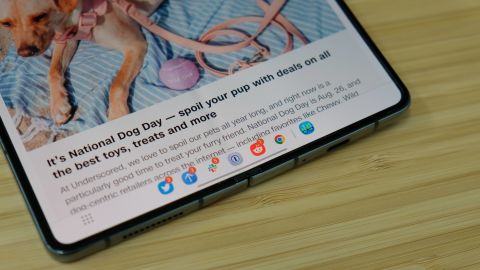
The Z Fold 4 ships with Android 12L with Samsung’s OneUI 4.1.1 running on top of it. Google released Android 12L as a special build for larger screened Android devices such as foldable phones and tablets. The most notable addition to Android 12L that you’ll notice out of the box is that the Z Fold 4 has a taskbar at the bottom of the screen.
The taskbar looks and looks a lot like the taskbar in Windows 11 or the dock in MacOS. It gives you a place to keep your favorite or most used apps, and have them always present and ready to open. It sounds basic, but the taskbar has completely changed how I use the Z Fold 4.
I’m able to quickly open any one of my top eight apps, either in full screen with a simple tap, or drag and drop one of them onto either side of the main screen to start multitasking.
For instance, I used 1Password to manage all of my logins and payment information. Whenever I’m signing into a new app or website, I can open 1Password on one side of the screen, leaving the other app open on the opposite side and creating a new login entry in just a couple of taps.
I often found myself using Chrome on one side of the screen while researching different products and keeping Reddit open on the other side as another place to conduct research.
Samsung has said that it plans to bring the taskbar to the Z Fold 3 in a future software update, and I personally hope it arrives ASAP.
Multitasking on the Z Fold 4 gives you a good feel for the phone’s performance, which has been great during my time testing the phone. Benchmarks show that the Z Fold 4 and Z Flip 4 are on par with each other, with the Flip 4 scoring just slightly higher in Geekbench 5’s results. The Z Fold 4 does beat out the Galaxy S22 Ultra in the same benchmark tests, but falls short of the iPhone 13’s performance.
As for battery life during all of this multitasking, it’s improved slightly over the Z Fold 3 even though both phones have the same battery size. You’ll still need to charge every night, and on days where you’re using the main screen a lot, you may even have to top off after work. When playing a 4K video on loop, the Z Fold 4’s battery powered through 12 hours and 37 minutes of continuous playback. That’s short of the Z Flip 4’s 14 hours in the same test.
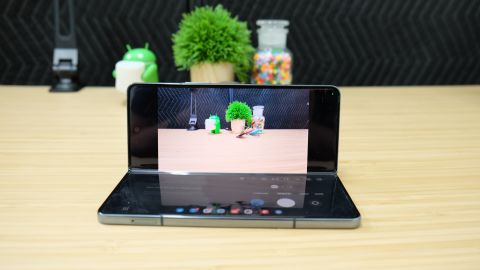
One of the biggest complaints about previous Galaxy Z Folds has been the cameras just aren’t up to par with what you’d expect on a phone that costs $1,800. With the Galaxy Z Fold 4, Samsung upgraded the cameras to what’s effectively the same camera system used in the Galaxy S22+. That means you get a 50-megapixel wide camera, a 12-megapixel ultra-wide and a 10-megapixel telephoto camera with 3x optical zoom and 30x digital Space Zoom. There’s also a 10-megapixel front-facing camera, and the under-display camera is 4-megapixels.

Over the last year, I’ve all but refused to take photos with the Z Fold 3’s 12-megapixel main camera. But the opposite has been true while I’ve been testing the Fold 4 over the last couple of weeks.
Pictures and videos captured with the Fold 4 look bright, vibrant and are on par with what I expect to get from my iPhone 13 Pro Max. Or at least, that’s the amount of confidence I have in the Z Fold 4’s camera setup. Which is reassuring.
The Space Zoom feature still leaves a lot to be desired. As you get over 10x zoom, the picture takes on a cartoon-like look. When looking at a thumbnail of any zoomed-in photos, they look alright. But the moment you open it, you see that the photo really isn’t great.
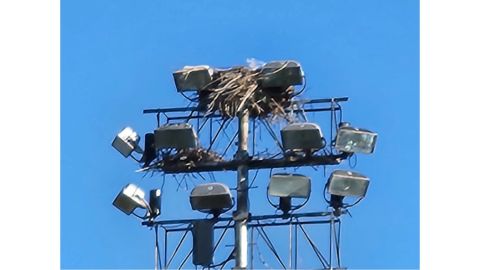
It’s a shame that it took Samsung until the Z Fold 4 to upgrade the cameras to a flagship-caliber level. The experience of taking photos on a Fold with a large inside display is easy and informative. As you snap pictures, there’s a stream of previews that fills up part of the screen so you can see them in real-time and make adjustments.

Samsung has virtually zero competition in the US in the foldable phone market. Motorola released the Razr with a foldable display that looks and works more like the Z Flip line, but outside of that, Samsung is on its own. And while it’s applaudable that Samsung is setting new boundaries for what smartphones can do, it’s a shame that there aren’t any other companies doing the same.
And consumers are suffering because of it.
The Z Fold 4 is arguably an iterative update, which is also a byproduct of no competition. But the part that’s really frustrating is the $1,800 price tag. When the first Fold launched, the $2,000 price was justified because the technology was new, and harder to manufacture and consumers were justifiably paying an early adopter tax. We’re now four generations in and Samsung has only lowered the price of its Fold offering by $200. Surely there have been lessons learned over the last few years, leading to areas where manufacturing has become more efficient, and the price of components has come down.
Without competition, however, Samsung isn’t forced to lower the price to remain competitive. Samsung can charge whatever it wants for the Fold 4, and a subset of consumers are going to pay it.
The S Pen isn’t included — and you’ll need a case
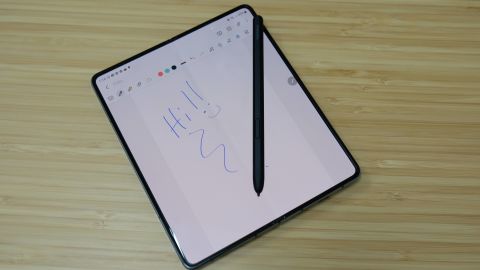
Just like the Z Fold 3, the Z Fold 4 supports Samsung’s S Pen stylus for writing or drawing on the main screen. You can’t use just any ol’ S Pen. Instead, you’ll need to use the $49.99 S Pen Fold Edition or the $99 S Pen Pro. Both are designed with a tip that moves in and out of the body of the pen, preventing you from applying too much pressure to the foldable main display.
An S Pen isn’t included with the Z Fold 4. It’s an accessory you’ll have to purchase on its own. And what’s more, if you decide you need a pen to turn the Z Fold 4 into a note-taking machine, you’ll most definitely want to get a case that holds the S Pen. That’s right, there isn’t a place to store the S Pen on the Z Fold 4, as there had always been on the Galaxy Note lineup, and there is now on the Galaxy S22 Ultra.
I understand why there isn’t an S Pen silo on the Fold lineup — it takes up precious battery space and will surely complicate the design. Add in the fact that using an S Pen with either Z Fold model is something that not everyone is going to do, and the decision to sell it as a standalone accessory, makes even more sense. But I certainly wish there was a way for the S Pen to slide right into place inside the Z Fold 4.
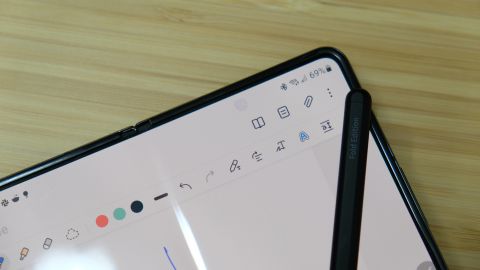
When you open the Z Fold 4 you’re greeted with the large 7.6-inch display that’s free of any front-facing cameras, or so it appears. The Under Display Camera (UDC) is still present, but it’s even more hidden than it was on the Z Fold 3.
But, the problem with the UDC is that it’s only 4-megapixels and it just doesn’t look all that great. It’s definitely not a camera you’ll want to take selfies with. The UDC is a camera that’s better suited for video calls using Google Meet or a similar app.
I’m torn on whether I’d rather have a hole punch cutout, similar to what’s on the front display, for an upgraded selfie camera on the inside screen, or the current 4-megapixel shooter. Having a full, uninterrupted display is a major selling point of a device like the Fold.
| Main display |
7.6-inch QXGA+ Dynamic AMOLED w/120Hz adaptive refresh rate |
6.7-inch FHD+ Dynamic AMOLED w/120Hz adaptive refresh rate |
6.8-inch Infinity-O Quad HD+ Dynamic AMOLED |
|---|---|---|---|
| Cover screen |
6.2-inch HD+ Dynamic AMOLED w/120Hz adaptive refresh rate |
1.9-inch Super AMOLED |
N/A |
| Processor |
Snapdragon 8+ Gen 1 |
Snapdragon 8+ Gen 1 |
Snapdragon 8 Gen 1 |
| Storage |
256GB / 512GB / 1TB |
128GB / 256GB / 512GB |
128GB / 256GB / 512GB / 1TB |
| Memory |
12GB |
8GB |
8GB / 12GB |
| Battery |
4,400 mAh |
3,700 mAh |
5,000 mAh |
| Rear cameras |
50MP wide, 12MP ultra wide, 10MP telephoto |
12MP wide, 12MP ultra wide |
108MP wide, 12MP ultra wide, 10MP telephoto 3x optical zoom, 10MP telephoto 10x optical zoom |
| Front cameras |
4MP under display camera, 10MP |
10MP |
40MP |
| Colors |
Graygreen, Phantom Black, Beige |
Bora Purple, Graphite, Pink Gold, Blue |
Phantom Black, Burgundy, Phantom White, Green |
| Price |
$1,799 |
$999 |
$1,199 |
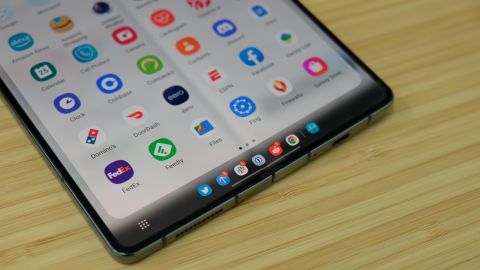
The Galaxy Z Fold 4 is a stellar foldable phone that offers great multitasking capabilities, fantastic cameras and a large display. At $1,799, it’s not going to be a phone for everyone. Instead it’s still priced for early adopters or those who can find a good use for everything the Z Fold 4 has to offer.
If you currently own a Z Fold 3, the Z Fold 4 is of course an upgrade, but I’m not sure it’s an upgrade I can recommend making. I came into this review ready to upgrade my personal Z Fold 3 to a Z Fold 4, but after a couple of weeks of testing, I’m going to skip the Z Fold 4. Even though I love the cameras on the Z Fold 4, and the small display changes are incredibly appealing, I can’t justify spending $1,800 on the Z Fold 4 when I have a Z Fold 3 that will eventually get the same software features.
If you’re ready to test the foldable phone waters or you have an older Z Fold model, you have a couple of options. You can either get the $999 Galaxy Z Flip 4 as a more budget-friendly option, or take the full plunge and pick up the Z Fold 4, which is a fantastic pick. Just be ready to pay. A lot.

